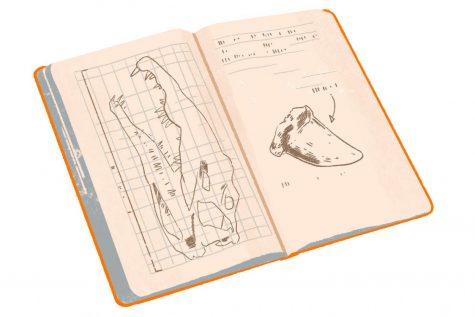Columbia digs dinosaurs
September 26, 2019

Imagine digging knee-deep through layers of soil and sediment just to find an object that may or may not be a prehistoric rock. That pressure, combined with the desert heat, can push any Columbia student over the edge, or it may just be someone’s dream vacation.
Students who took the “Paleontology Field Observation & Methods: Petrified Forest National Park” course in May 2019 traveled to Petrified Forest National Park in Arizona, where they documented fossils and other geological factors.
“I took the class just because I’m a [biology] minor, and I was really interested in fossils,” said Parker Worster, junior photojournalism major. “I was excited to go to Arizona and be able to do something that a lot of people don’t get an opportunity to do.”
Having camped near the site for two weeks, students were tasked with digging for fossils and recording observations into field notebooks that would later be used for their final projects in the form of scientific illustrations and art.
“It’s a growing opportunity to bring art and science together,” said Chris Arnold, assistant professor in the Design Department. “The fact that there [are] so many students doing visual work, it makes sense.”
As part of the Wabash Arts Corridor Crawl on Oct. 18, students who took the course will display a timeline of their trip with data from their notebooks, photographs from the Petrified Forest and other illustrations that were created as a result of their experiences.
“It’s kind of a group effort,” said Ari Ganahl, junior illustration major and co-curator of the upcoming exhibit. “Everyone in the class is still talking and communicating on [setting] it up and putting their own work in.”
The exhibit will be located on the seventh floor of 623 S. Wabash Ave. and feature a visual representation of the 14 days of their trip.
“It’s a hodgepodge of the art we made and the things we wrote in our journals,” Ganahl said. “It’s really more about presenting the experience of being there and what the trip is.” Co-taught by Arnold and Dr. Robin Whatley, associate dean of the School of Liberal Arts and Sciences and director of the honors program, the course focuses on observing and collecting vertebrate fossils from the late Triassic period—251-199 million years ago—while recording data and making observations.
“In order to actually understand something about the park and get something out of the trip, they have to learn a little bit about the evolution of vertebrates,” Whatley said.
Whatley introduced the course in 2015, and later taught it along with Arnold in 2017 as a collaboration between students interested in science, many of them majoring in illustration, with the focus primarily on each students’ field notebook and what they write.
“The field notebook is actually the method that I use and every paleontologist uses when they go into the field on [an] expedition to take notes,” Whatley explains. “In the future … the field notebook could be picked up by anybody who’s trying to go back to that area or learn something about that trip.”
By using the field books, Arnold hopes to attract more interest by framing the students’ experience visually for people to see.
“The main goal of the exhibit is really to help anyone who isn’t quite familiar with both the [Petrified Forest] and what we’re doing in the classroom,” said Arnold. “Whatever the creative output is, whether it’s a performance, photography, drawing, you’ll see those in line with the exhibition.”
Correction 09/26/19 at 12:26 p.m.: A previous version of this article stated the incorrect year Arnold began to instruct the course and the incorrect area of study. The Chronicle regrets this error.







